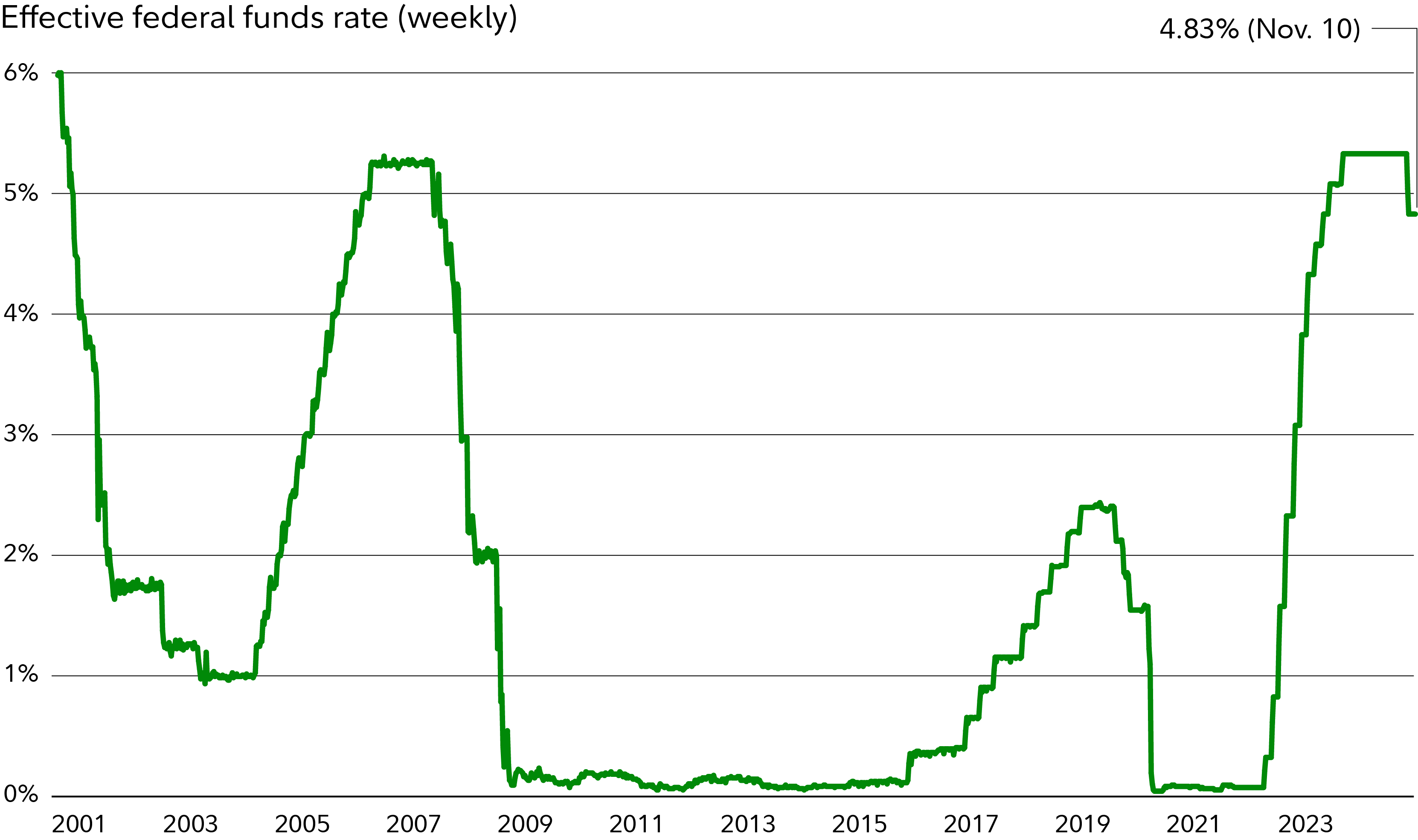There’s still room for future rate cuts from the Fed. At the last FOMC meeting, the target rate range was cut by a quarter point, bringing it down to 4.50% to 4.75%. Compared to recent years, rates are noticeably high—especially when contrasted with the near-zero interest rate environment that persisted in the early 2010s and 2020s. President-elect Trump repeatedly advocated for lower rates during the campaign season, and the Federal Reserve has telegraphed that it may continue to bring them down over time—albeit at a potentially measured pace.



